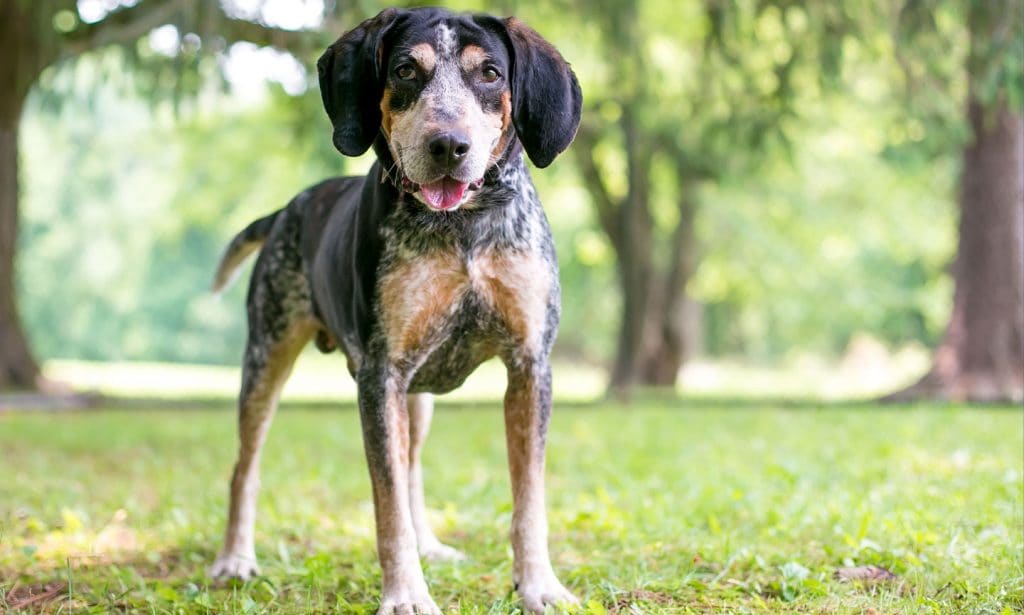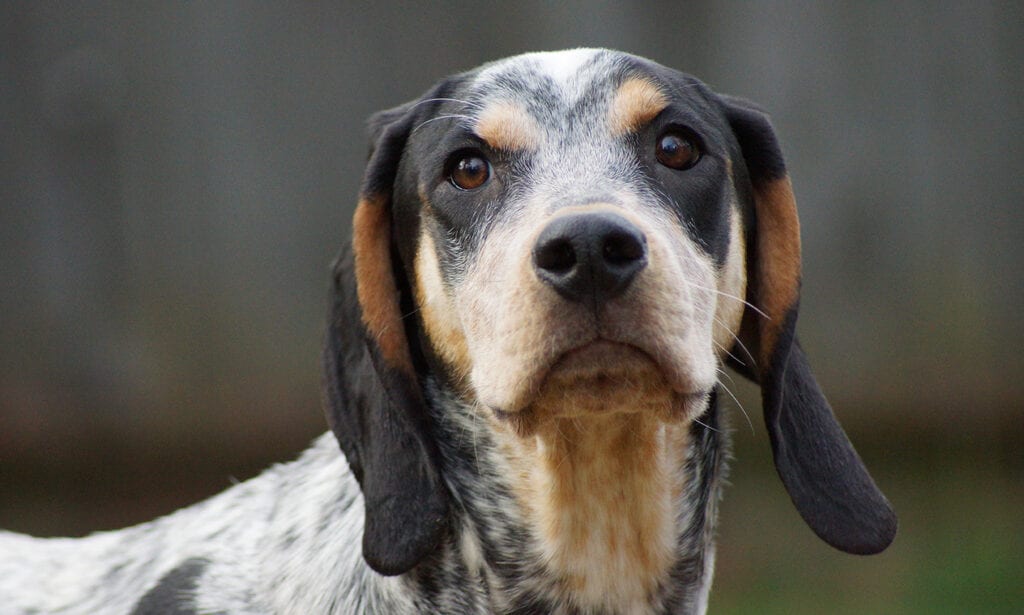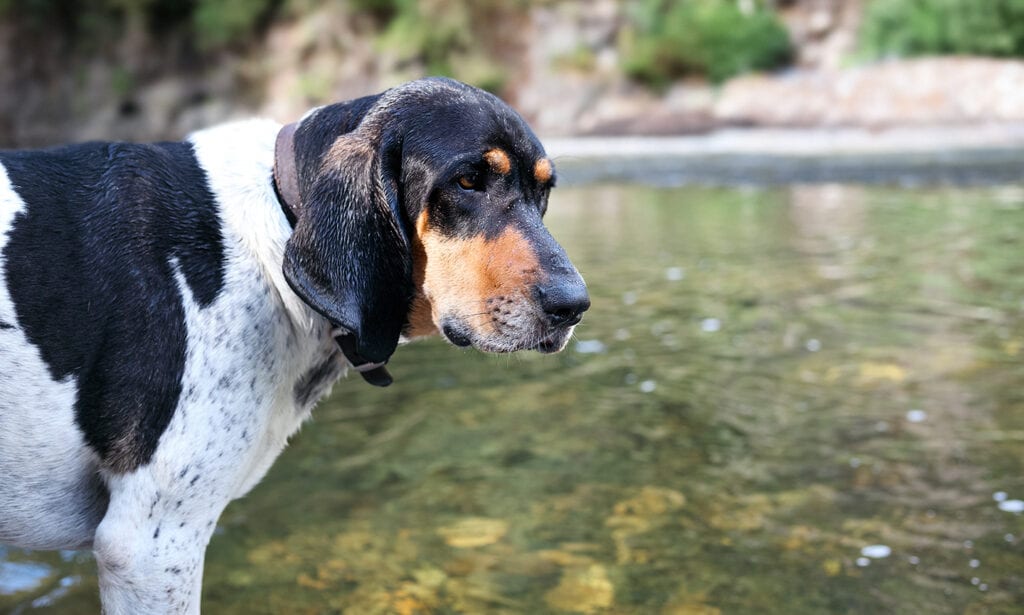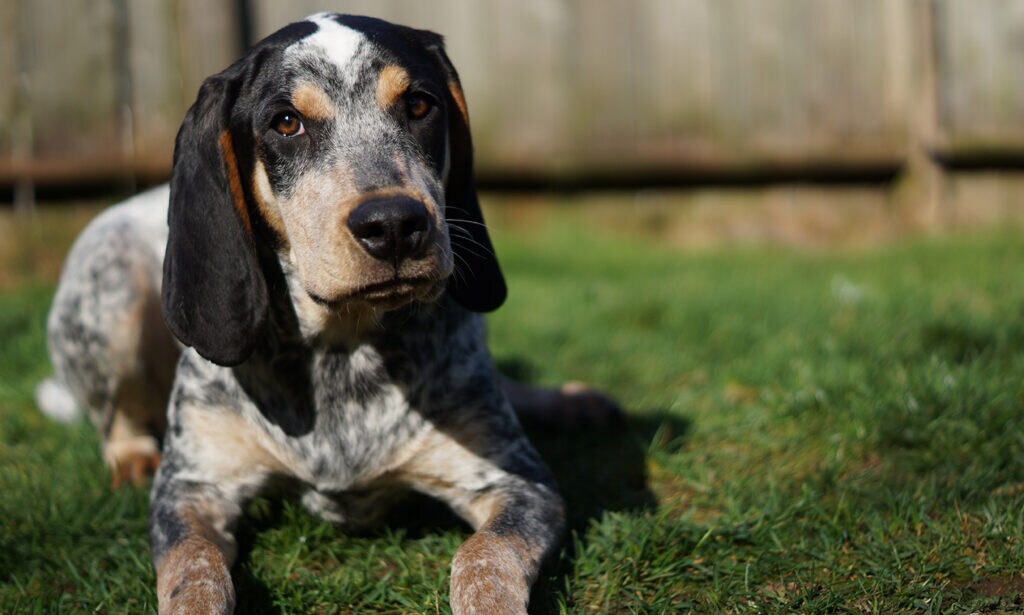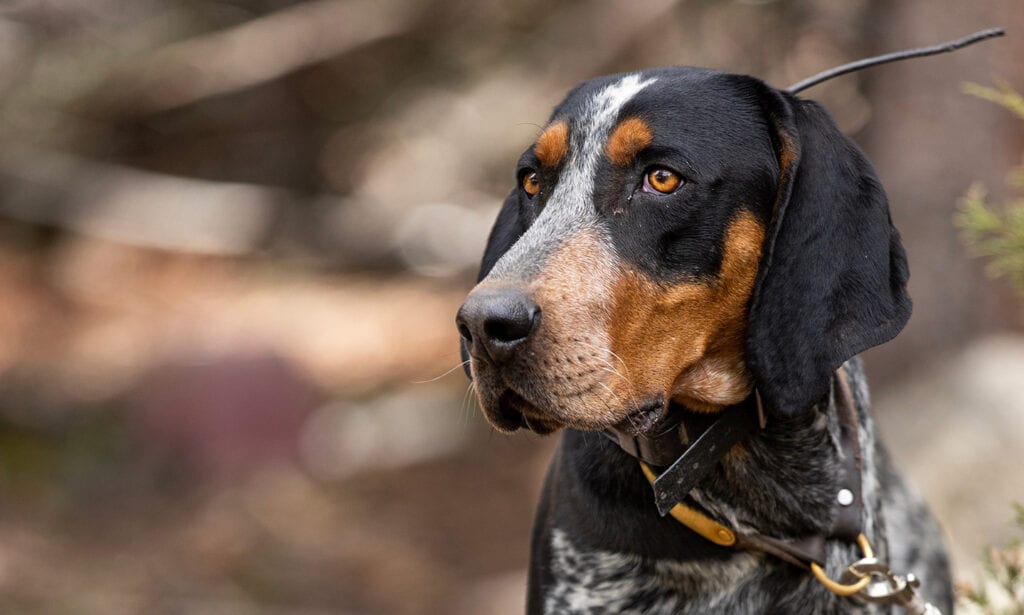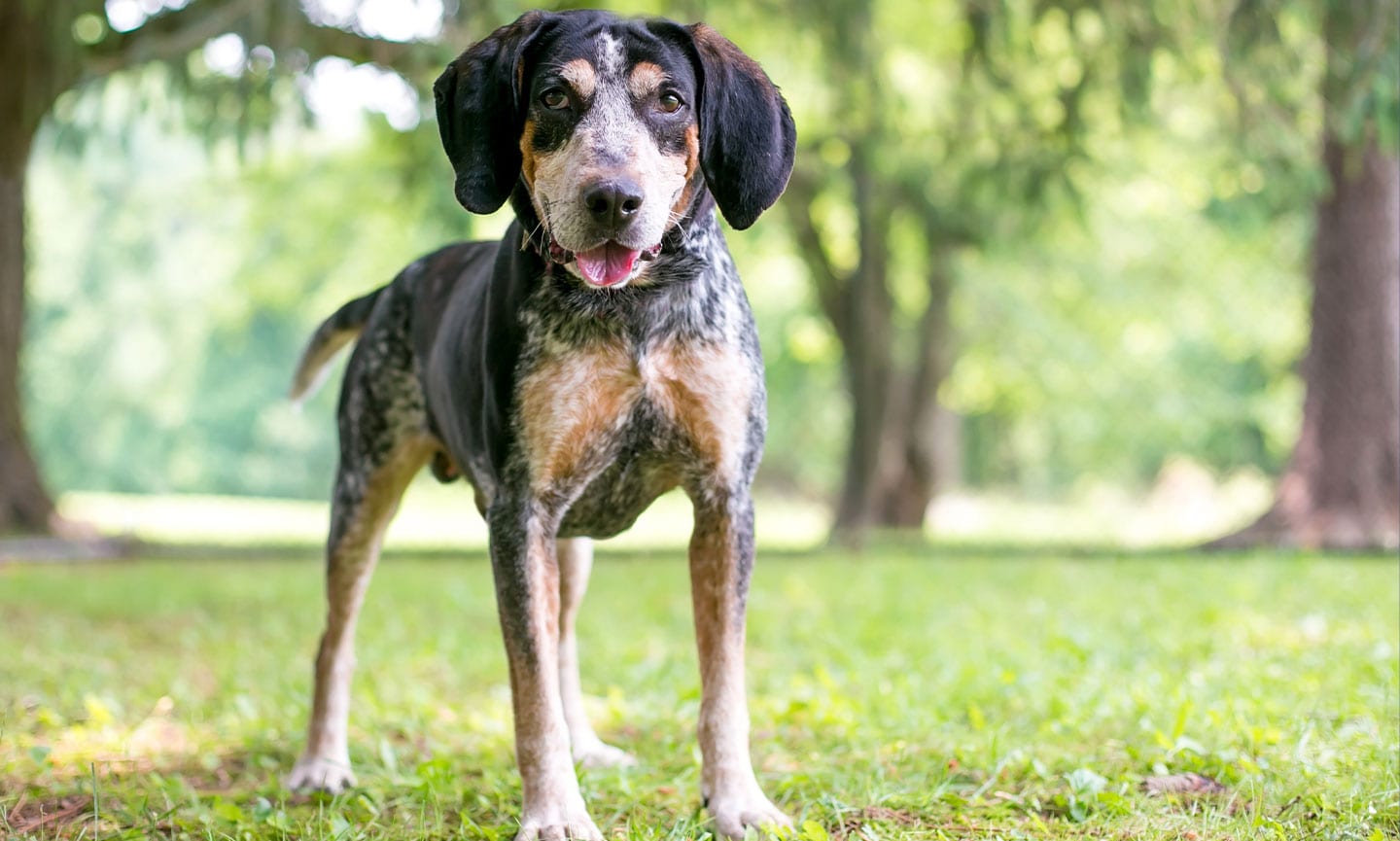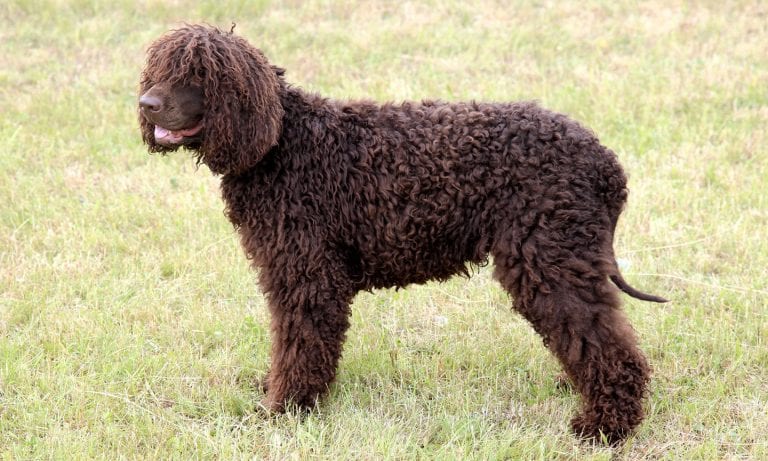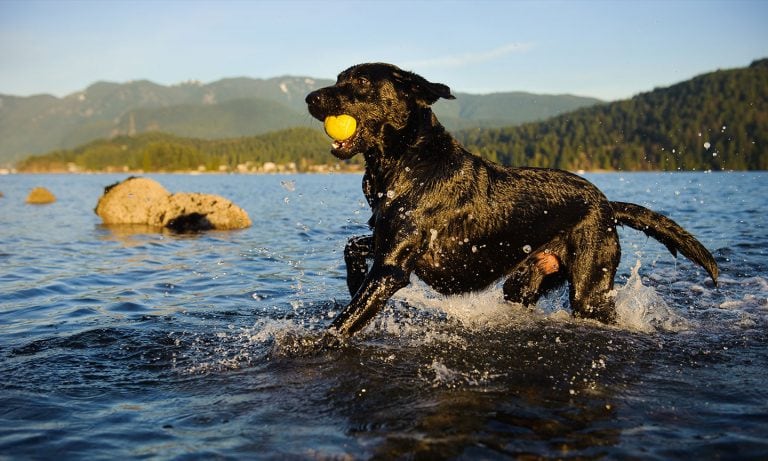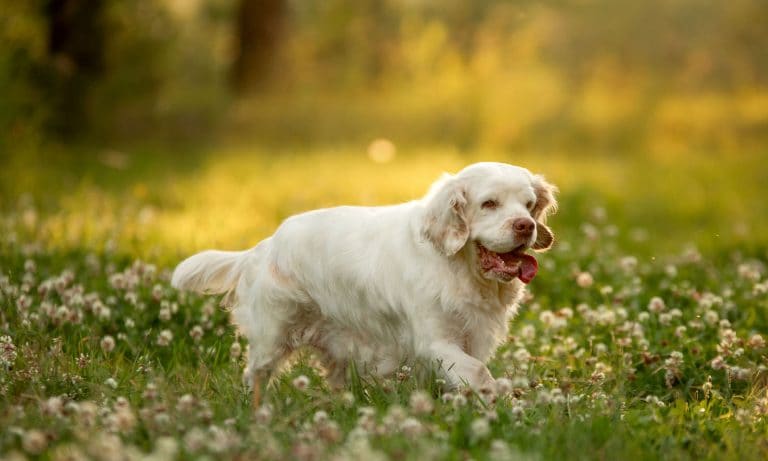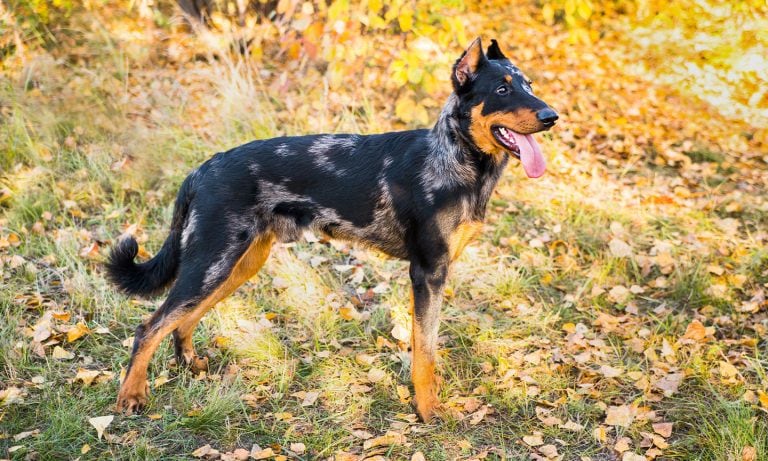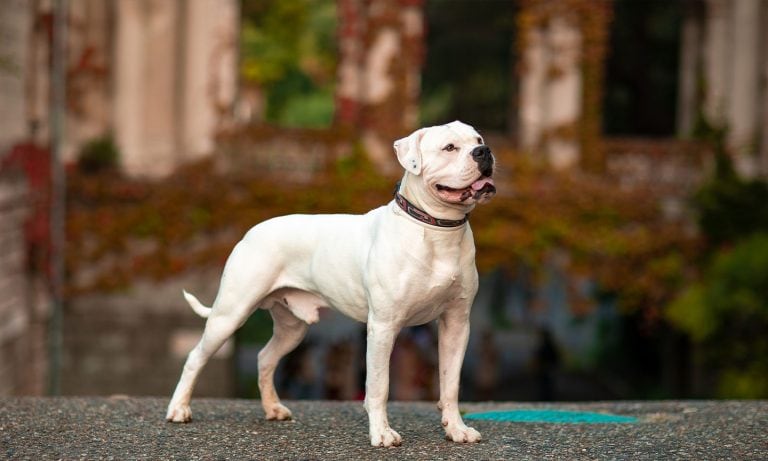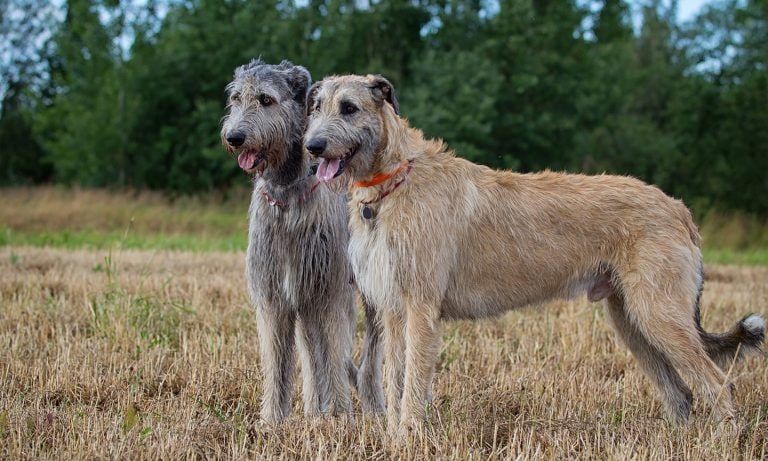Is “Adventure” is your middle name? If you’ve never met a tent you didn’t want to sleep in, a trail you didn’t want to run, or a road trip you didn’t want to drive, then the up-for-anything Bluetick Coonhound might be your canine soulmate. The rough-and-tumble outdoorsman of the dog world is ready for adventure, whether in the city or country. Bred for hunting, Bluetick Coonhounds are high-energy, hard-working dogs and want a job to do. But it’s not all work and no play. These sweet-natured pups make devoted family pets.
Breed Snapshot
Temperament:
AthleticLoyalEnergeticCoat Color:
Blue TickedBlue Ticked And Tan
Best For
The Bluetick Coonhound is a striking large-sized breed known for their distinctive blue mottled coats. Bred for hunting, they possess a keen sense of smell and strong prey drive. Despite their hunting instincts, they are affectionate, loyal companions who thrive in active households.
Bluetick Coonhound Temperament
Bluetick Coonhounds are full of personality and are intelligent, loving goofballs. The Bluetick temperament is sweet-natured and personable, and they have lots and lots of energy. They thrive with pet families who lead active lifestyles. While they’re good with kids but better with older children than super young ones—Blueticks can be rambunctious.
These hunting dogs are scent hounds, meaning they hunt by smell. They have a strong prey drive, which tends to kick into high gear around smaller animals, such as squirrels and other backyard creatures. So training is essential. Although, you’ll never completely train out their desire to chase. But, since Bluetick Coonhounds also have intelligence to spare and are determined canines often described as “craving a job” (they’ll love to grab your slippers or the morning paper), they enjoy the work.
Because they’re so bright and a bit independent (those hunting instincts at play), they may be more challenging to train than, say, an Australian Shepherd. They need a confident and patient leader who understands the unique needs of this hunting dog and can bring out the best in this pup.
How to Care for a Bluetick Coonhound
While the Bluetick Coonhound breed doesn’t require nearly as much grooming as other breeds, you’ll need to devote time to training and exercising this pup. Your Bluetick Coonhound will reward you with lots (and lots and lots) of affection. A happy, tired pup will gladly sleep at your feet.
Bluetick Coonhound Health
Bluetick Coonhounds tend to have a lifespan of 11 to 12 years. While they are a generally healthy breed, there can be a few health issues to watch. Be sure to purchase your puppy from a reputable breeder, who routinely screens them for health and temperament problems. If you’re adopting your pup, get a copy of the vet’s wellness exam.
- Hypothyroidism: Blueticks are prone to hypothyroidism, a condition in which the body doesn’t produce enough thyroid hormones. Signs can include dry skin and coat, hair loss, weight gain or behavioral changes. Treatment is typically daily oral medication.
- Hip and Elbow Dysplasia: Dysplasia refers to joints that don’t form properly, resulting in looseness that can cause lameness, pain, and arthritis. While potentially inherited, there is currently no genetic screening test for hip and elbow dysplasia, but dogs with either condition should not be bred. Treatment typically includes joint supplements, weight management, pain medication, and, in severe cases, surgery.
- Bloat or Gastric Dilatation-Volvulus (GDV): Your Bluetick’s deep, narrow chest places them at higher risk for GDV or bloat. When a dog bloats, the stomach twists on itself and fills with gas. Left untreated, the disease can be quickly fatal. If your dog retches or dry-heaves (with no actual vomit produced), acts restless, has an enlarged abdomen, or lies in a prayer position (front feet down, rear end up), take your pet to an emergency hospital immediately! Treatment for this condition is surgery to pin the stomach to the side of the body to prevent future instances. You can help prevent bloat by feeding your pup smaller meals more frequently throughout the day with a slow feeder and waiting an hour before and after meals before strenuous exercise.
- Cataracts: Older Blueticks often develop cataracts, which give their eyes a cloudy, opaque appearance. While many dogs adjust to eyesight loss well later in life, surgery can also be an option. Your vet will examine your companion’s eyes at routine appointments.
Bluetick Coonhound History
The Bluetick Coonhound’s history is as American as a breed gets, and the story behind them is as colorful as their coats.
Before becoming a breed, the Bluetick Coonhound was considered a color variety of the English Coonhound. The Bluetick’s distinct origins go back to Louisiana. They arose from years of crossbreeding by those looking for the perfect hunting companion. Legend has it that the Marquis de Lafayette gave French staghounds to George Washington during the early days of the American Revolution. The French staghounds were then crossbred with English foxhounds to create the elite hunting breed we know today: One with incredible endurance and an acute cold nose—a dog capable of picking up scents that are hours, or even many days, old.
Early Southern settlers liked Blueticks for their athletic build, stamina and determination, so they used them for hunting raccoons, as well as in packs of them to track down larger quarries such as wild boar, lynx, bear, and cougar. Blueticks remain highly sought-after companions for pet parents who enjoy the high energy of these wonderfully loyal working dogs.
Today, Blueticks are iconic companions in old westerns, movies, television shows and cartoons. On the college circuit, the Bluetick Coonhound is the proud mascot of the University of Tennessee. The breed became eligible for American Kennel Club registration in 2009 and has been competing in the Hound group since 2010.
You can find a list of reputable Bluetick Coonhound breeders on the American Kennel Club’s website. The cost of Bluetick Coonhound puppies ranges from about $500 to $1,200 per puppy and increases in price depending on their markings and pedigree. You can also contact Bluetick Coonhound rescue organizations to adopt a Bluetick, watch for the breed at your local animal shelter, or keep an eye out for the breed at your local animal shelter, or search Chewy’s database of adoptable dogs in your area.
FAQs
Do Bluetick Coonhounds shed?
Bluetick Coonhounds shed moderately, thanks to their short, coarse coats. Brushing their coat at least twice a week can help minimize any shedding.
Are Bluetick Coonhounds good family dogs?
Bluetick Coonhounds are best suited for active families with older children who have the energy to meet their furry friend’s exercise needs or a home where they can have a job such as hunting or retrieving something.
Do Bluetick Coonhounds like to swim?
Yes, Bluetick Coonhounds like to swim. While Blueticks are associated with more land-based activities, swimming is another outlet to channel their boundless energy—they adore it.
What are the most common Bluetick Coonhound mixes?
- Bluetick Coonhound-Lab mix, (Bluetick Lab)
- Bluetick Coonhound-Beagle mix, (Bluetick Beagle)
- Bluetick Coonhound-Pitbull mix, (Bluetick Pitbull)
- Bluetick Coonhound-German Shepherd mix, (Bluetick Shepherd)
- Bluetick Coonhound-Blue Heeler mix (Bluetick Heeler)
Note: These are not purebred dogs but mixed breeds.

Top Takeaways
Ready to grab your backpack and hit the trail? The Bluetick Coonhound certainly is. These hunting dogs thrive in active homes with ample opportunities for exercise and mental stimulation.
Expert input provided by veterinarian Dr. Christina Haney of the Alicia Pacific Vet Center of Laguna Niguel, CA, and certified dog trainer, Sylvia Borghardt at sylviaborghardtdogtraining.com.
Photo credit for “How do I look?” American Kennel Club.
Breed characteristic ratings provided by veterinarian Dr. Sarah J. Wooten, DVM, CVJ, a veterinarian at Sheep Draw Veterinary Hospital in Greeley, Colorado; dog trainer and behavior consultant Irith Bloom, CPDT-KSA, CBCC-KA, CDBC, owner of The Sophisticated Dog, LLC, in Los Angeles; and certified animal behavior consultant Amy Shojai, CABC, in Sherman, Texas.
The health content was medically reviewed by Chewy vets.

Search for Adoptable Bluetick Coonhounds Near You
Top Bluetick Coonhound Names
These are the top Bluetick Coonhound names as chosen by Chewy's pet parents!
Female Names
- Daisy
- Luna
- Dixie
- Willow
- Bella
- Sadie
- Belle
- Dolly
- Lucy
- Maggie
Male Names
- Blue
- Duke
- Cooper
- Hank
- Ruger
- Boone
- Loki
- Beau
- Moose
- Bo
Share:
